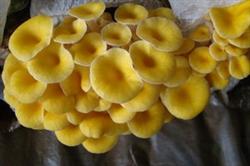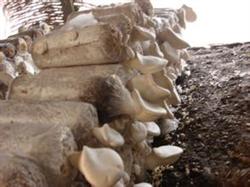Problems needing attention in the production of Pleurotus ostreatus

Pleurotus ostreatus, also known as Pleurotus ostreatus, Pleurotus ostreatus, because of its fruiting body as white as snow, good taste, rich in a variety of nutrients, is one of the most potential rare edible fungi. This paper briefly introduces the problems that should be paid attention to in the cultivation of Pleurotus ostreatus. First, according to the selection of varieties in the market, some places introduce varieties blindly regardless of the region of sale and the characteristics of the varieties, resulting in the wrong way to sell after delivery, low prices and poor efficiency of mushroom farmers. At present, the requirements of the international market for mushroom shape are palm-shaped, short stalk, sold abroad, you can choose Tianshan No. 2. The domestic market can sell funnel-shaped, long stalk, choose Tianshan No. 1. Second, the water content of the culture material is used to determine the moisture of the main material of the culture medium, and according to the water content, water is added scientifically to make the water content of the culture medium reach 55% to 60%. Third, the mushroom farmers who added auxiliary materials after fermentation showed that the pollution rate of fermented materials was high after inoculation, and the success rate of unfermented materials was high. This is because most mushroom farmers add the main materials and excipients at the same time before fermentation, the high temperature causes the acidity of the culture material to be on the high side, and the chance of infecting miscellaneous bacteria increases. At the same time, the lack of nutrients in the later stage affected the emergence of mushrooms. The experiment shows that in order to increase the yield, only the main material and starter should be mixed during fermentation, and after the main material is fermented, auxiliary materials should be added and bagged and sterilized. Fourth, appropriately increase the amount of inoculation in the cultivation of Pleurotus ostreatus, due to the use of two-end inoculation and rope ligation, there is a phenomenon that the bacteria of some bacteria bags are slow in the later stage and the emergence of mushrooms is delayed. To this end, some technicians proposed to set aside soybean-sized vents when tying the rope after vaccination. However, due to the mushroom farmers do not master this technology in place, the air hole is too large, or the air hole deviates from the inoculation block, directly facing the culture material, resulting in culture material infection. Therefore, one-sided emphasis should not be placed on ventilation during vaccination, and the ventilation hole should be positive to the strain block and should not be deviated, or the inoculation mouth should be sandwiched with cotton ventilation. Fifth, the number of layers is generally 4-6, leave more ventilation ducts when the temperature is high, and the number of layers should be less, and the layers should be isolated with bamboo poles. In principle, the bag temperature should not be higher than 28 ℃. If it is higher than 28 ℃, measures such as stacking, evacuation, ventilation and shading should be taken to reduce the temperature. 6. According to the characteristics of varieties, there are many varieties popularized at present, and the characteristics are different. as far as the main varieties are concerned, the growth period of Tianshan 2 is longer than that of Tianshan 1, and the temperature of budding is 3 ~ 5 ℃ lower. Therefore, according to the varieties, corresponding technical measures should be taken to give appropriate temperature to promote the early emergence of mushrooms. At the same time, it should be managed in batches according to the maturation of bacterial bags. The mushroom shed is separated from the mushroom shed, that is, the mushroom bag which is stimulated by temperature difference is moved into the mushroom shed in time, and the mushroom is cultivated at constant temperature. 7. Scratch the bacteria after the bag is full of bacteria, continue to culture for 40 to 50 days, the hyphae develop thick and white to form the skin, the bags are hard, and scratch the bacteria when there are individual bags and primordia in individual parts. The method is as follows: untie the mouth of the bag, scrape off the old bacterial mass, or gently scratch off the surface bacterial skin at the end of the column, with an area of about 2 cm in diameter. After scratching the bacteria, close the mouth of the bag again, pull it out a little harder, and rotate it for 1 week to twist the mouth of the bag. After scratching the bacteria, the temperature in the shed was controlled at 15: 20 ℃, and after 3 days, the temperature difference began to widen, the temperature difference between day and night was controlled at 10 ℃, the humidity was 80% to 85%, and scattered light was needed. After budding, 1-2 strong mushroom buds were retained at each end and moved into the mushroom shed for constant temperature culture.
- Prev

Cultivation techniques of Pleurotus ostreatus
The production of mushroom rods and the formula of cultivating mushroom rods: (1), cottonseed hull 92%, corn meal 3%, wheat bran 5%, water content 65%. (2), cottonseed hull 70%, corn meal 3%, sawdust 20%, wheat bran 7%, gypsum 2%, quicklime 5%, water content 65%. The preparation before production is usually in mid-August in Jixian County.
- Next

Control of Fusarium wilt of chrysanthemum
Fusarium wilt is one of the most important diseases of chrysanthemum. It has occurred in many areas of our country, although the incidence of the disease is not high, but it is extremely harmful. Once the plant is infected, if the control measures are not taken in time, it will lead to rapid plant death. Fusarium wilt of chrysanthemum is a fungal disease. The pathogen is Fusarium oxysporum, which is a kind of.
Related
- Fuxing push coffee new agricultural production and marketing class: lack of small-scale processing plants
- Jujube rice field leisure farm deep ploughing Yilan for five years to create a space for organic food and play
- Nongyu Farm-A trial of organic papaya for brave women with advanced technology
- Four points for attention in the prevention and control of diseases and insect pests of edible fungi
- How to add nutrient solution to Edible Fungi
- Is there any good way to control edible fungus mites?
- Open Inoculation Technology of Edible Fungi
- Is there any clever way to use fertilizer for edible fungus in winter?
- What agents are used to kill the pathogens of edible fungi in the mushroom shed?
- Rapid drying of Edible Fungi

